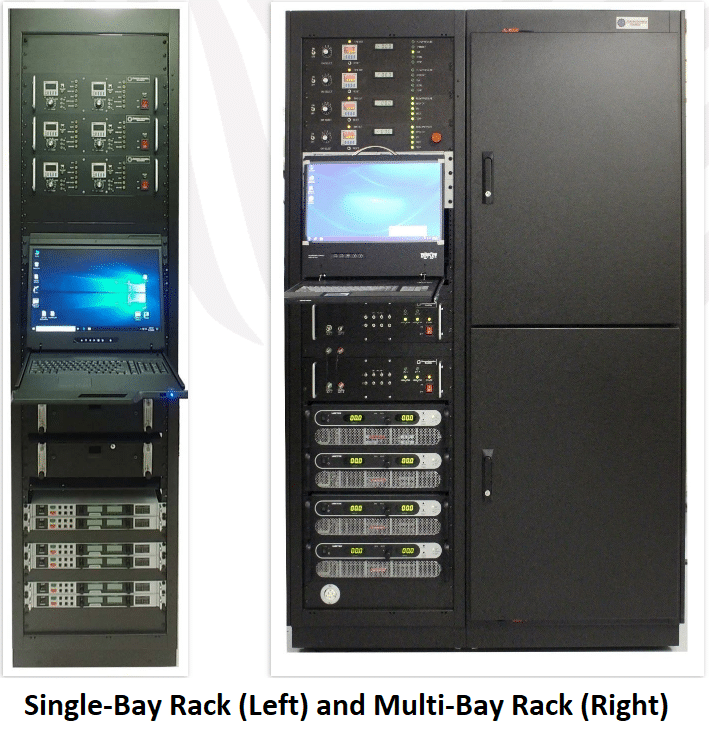Laser Diode Burn-In Racks
 Don't think of it as a Burn-in Rack. Think of it as a Multi-position Test Station.
Don't think of it as a Burn-in Rack. Think of it as a Multi-position Test Station.
The sky is the limit with our burn-in racks. We have standard models, but if you want something special, we’re up for the challenge!
- All our racks are capable of accurate measurements of typical diode parameters and multi-step burn-in recipes. We can even run LIV+Spectrum on our racks!
- The newest addition to our rack family is the new small-footprint single-bay rack. This rack will allow up to 25 KW of burn-in capacity within a standard 19" rack footprint.
- We support all known laser diode formats and cooling methods.
- Our burn-in racks are optimized for the application
Rack Format:
We have 3 rack formats:
- Single-Bay (Small footprint) - Optimized to take up the minimum floor space.
- Double-Bay - Supports many more devices than a single-bay rack
- Multi-Bay - Similar to the double-bay racks except even more devices can be run.
Products Supported:
Our burn-in racks can be configured to support:
- Fiber-coupled and uncoupled laser diodes
- Passively and actively-cooled devices
- Single emitters, bars, and stacks
- Lensed or unlensed devices
- CW or pulsed devices or recipes
- High-current (>300A) and high-voltage (>80V) devices
- A mix of all of the above
Measurements Supported:
- Device current
- Device voltage
- Cooling water input & output temperature
- Cooling water flow rate (optional)
- Cooling water input & output pressure (optional)
- Fiber boot temperature (optional, fiber-coupled devices only)
- Optical output (optional)
- Wavelength (optional)
- Custom measurement types as specified by customer (optional)
Other Features:
- Multi-Step Recipes: This allows a burn-in recipe to have multiple steps with varying parameters for maximum burn-in flexibility.
- Multiple Interlocks: These protect both the devices and the rack in the event of an illegal operating condition.
- On-The-Fly Device Dropout (optional): This allows a single device in a string of devices to be dropped out of the burn-in if the device’s critical parameters go outside the acceptable range.
- Optical Power Interlock (optional): This quickly cuts the power supply output if the device optical power goes below a critical level. This prevents the device from destroying itself and allows for diagnostics or rework. It is available for both pulsed and CW operation.
